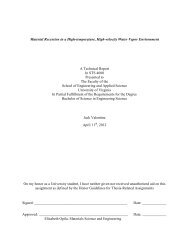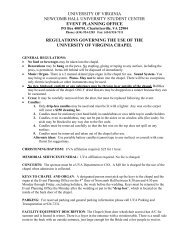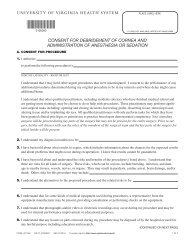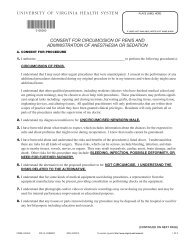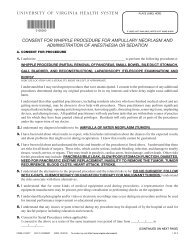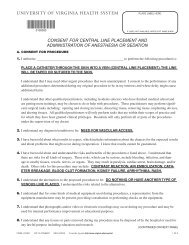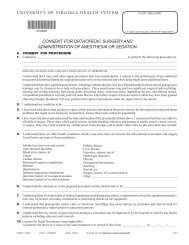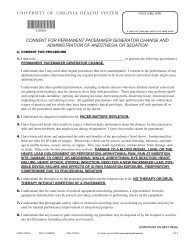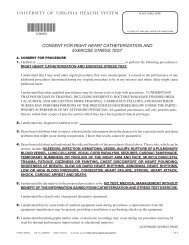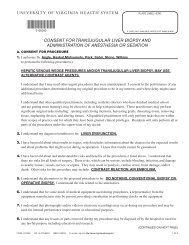Conscription of Cadaveric Organs for Transplantation - Cambridge ...
Conscription of Cadaveric Organs for Transplantation - Cambridge ...
Conscription of Cadaveric Organs for Transplantation - Cambridge ...
You also want an ePaper? Increase the reach of your titles
YUMPU automatically turns print PDFs into web optimized ePapers that Google loves.
Perspectivescadaver which has no autonomy andcannot be harmed.” 2Not everyone agrees with Jonsen.Those who disagree claim that peoplemay have interests that survive theirdeaths. Glannon suggests that oneexample <strong>of</strong> a surviving interest is adesire <strong>for</strong> “bodily integrity afterdeath.” 3 He and others argue thatthwarting this interest, by conscriptingorgans from the bodies <strong>of</strong> peoplewho had, while alive, expressed oppositionto posthumous organ donation,would harm these people after theirdeaths. To my mind the concepts <strong>of</strong>surviving interests and especially posthumousharm are difficult ones and Ihave yet to be convinced <strong>of</strong> their existence.But even if they are real, theycannot possibly be as important as theinterests <strong>of</strong> the living. As Harris pointsout: “[T]here is almost universal agreementthat death is usually the worstharm that can befall a human personwho wants to live. ...[R]ights or interestswould have to be extremely powerfulto warrant upholding such rightsor interests at the cost <strong>of</strong> the lives <strong>of</strong>others....[T]heinterests involved afterdeath are simply nowhere near strongenough [to justify doing this].” 4 Furthermore,it should be remembered,but <strong>of</strong>ten is not, that although somepeople wish to remain intact afterdeath, this is impossible —the bodyalways decays and returns to the“biomass.” 5The possibility that surviving familymembers could be harmed is moretangible and concerning. But just asin the case <strong>of</strong> surviving interests, howevermuch harm conscripting organswould impose on the family, the magnitude<strong>of</strong> such harm could never belarge enough to justify allowing peoplewith end-stage organ disease todie <strong>for</strong> lack <strong>of</strong> a transplant —a transplantthat could have been per<strong>for</strong>medhad organs not been discardedin the name <strong>of</strong> respecting familywishes. In this regard, Harris argues:“If we can save or prolong the lives<strong>of</strong> living people and can only do soat the expense <strong>of</strong> the sensibilities <strong>of</strong>others, it seems clear to me that weshould. For the alternative involvesthe equivalent <strong>of</strong> sacrificing people’slives so that others will simply feelbetter or not feel so bad, and thisseems nothing short <strong>of</strong> outrageous.” 6Similarly, Emson claims that it is “morallyunacceptable <strong>for</strong> the relatives <strong>of</strong>the deceased to deny utilisation <strong>of</strong>the cadaver as a source <strong>of</strong> transplantableorgans. Their only claim upon itis as a temporary memorial <strong>of</strong> a lovedone, inevitably destined to decay orbe burned in a very short time. Tome, any such claim cannot morallybe sustained in the face <strong>of</strong> what Iregard as the overwhelming and preemptiveneed <strong>of</strong> the potential recipient.”7 And note that society acceptsthat a military draft may sometimesbe necessary even though the death<strong>of</strong> young soldiers would be muchmore traumatic to surviving familymembers than would be mandatoryremoval <strong>of</strong> organs <strong>for</strong> transplantationfrom relatives who are alreadydead.Another concern is that allowingpeople to opt out on religious groundscould greatly reduce the efficacy <strong>of</strong>the program if many objectors wouldclaim this exemption regardless <strong>of</strong> theirreligious beliefs. But this is unlikelyif a strong burden <strong>of</strong> pro<strong>of</strong> <strong>of</strong> religiousobjection is required <strong>of</strong> thosewho attempt to invoke this exclusion,as was true <strong>for</strong> conscientious objectorsto military service. Furthermore,because conscription <strong>of</strong> cadavericorgans would cause little if any harm,it is likely that <strong>for</strong> many objectors thebenefit <strong>of</strong> getting out <strong>of</strong> the programwould not be worth the ef<strong>for</strong>t requiredto do so.A final concern about conscription<strong>of</strong> cadaveric organs is that it would109
Perspectivesgenerate outrage among the public.Although there likely would be publicresistance at the outset, people mightbecome more accepting <strong>of</strong> the ideaonce they understood the very favorablerisk/benefit ratio <strong>of</strong> the plan.Supporting this prediction is the observationthat there already exist widelyaccepted coercive practices that aredesigned to benefit the public and thatrequire participation <strong>of</strong> all citizensregardless <strong>of</strong> their wishes. Examplesinclude mandatory autopsy when foulplay or contagious disease may be thecause <strong>of</strong> death, a military draft duringwartime, <strong>for</strong>ced taxation, and therequirement to serve on juries. Just asis true <strong>of</strong> these examples, I suspectthat had we been born into a societyin which conscription <strong>of</strong> organs afterdeath were an established practice, seenas serving the public interest at anacceptably low cost, very few <strong>of</strong> uswould ever question it.Further Justification <strong>for</strong><strong>Conscription</strong> <strong>of</strong> <strong>Cadaveric</strong> <strong>Organs</strong>There is a general consensus that thereexists a moral obligation to rescue whenthere is little or no risk or cost <strong>for</strong> therescuer —<strong>for</strong> example, throwing a lifepreserver to a person in danger <strong>of</strong>drowning. It has been argued cogentlythat posthumous organ donation isanother example <strong>of</strong> an easy rescue <strong>of</strong>an endangered person because organrecovery and transplantation are <strong>of</strong>tenlifesaving <strong>for</strong> recipients and entail littleif any risk <strong>for</strong> cadavers. Based onthis reasoning, Peters claims that consentingto posthumous organ recovery“is not an act <strong>of</strong> charity. It is, rather, amoral duty <strong>of</strong> substantial stringency.” 8Un<strong>for</strong>tunately, under our current voluntarysystem, refusal rates <strong>for</strong> organdonation are high, which indicates thatmany people do not meet this obligation.There<strong>for</strong>e, conscription <strong>of</strong> cadavericorgans can also be justified asnecessary to ensure that people dowhat they should have done on theirown but did not.I recognize that there is a differencebetween a moral duty and a legal dutyand that the law does not alwaysrequire us to do the right thing. However,in the special case <strong>of</strong> easy rescue<strong>of</strong> an endangered person, where thepotential benefit is enormous and thecosts and risk <strong>of</strong> harm are negligible, Ibelieve that our moral duty to helpshould be written into law. GoodSamaritan laws that have been enactedin several states and many Europeancountries provide precedent <strong>for</strong> thisapproach.SynthesisCareful consideration <strong>of</strong> the pros andcons <strong>of</strong> conscription <strong>of</strong> organs afterdeath leads me to conclude that it isnot only ethically acceptable but actuallyethically preferable to our currentvoluntary approach to cadaveric organprocurement. In discussing this issue,Emson goes even further: “It is immoralto require consent <strong>for</strong> cadaver organdonation.” 9 Of course, not everyoneagrees, and this issue remains highlycontroversial. In general, controversiesabout policy proposals can onlybe resolved through actual experience.I believe that the arguments in favor<strong>of</strong> conscripting cadaveric organs <strong>for</strong>transplantation are strong enough torecommend a pilot study to see howwell the system would work. At thesame time, I recognize that any plan,no matter how seemingly sound intheory, is doomed to fail if it is widelyopposed by the public. Furthermore,attempting to implement policies withoutpublic support risks damaging thesystem we have in place. There<strong>for</strong>e,be<strong>for</strong>e undertaking a trial <strong>of</strong> conscription,it is essential to explore publicattitudes.110
PerspectivesAttitudes Toward <strong>Conscription</strong><strong>of</strong> <strong>Cadaveric</strong> <strong>Organs</strong> <strong>for</strong><strong>Transplantation</strong> amongthe U.S. PublicTo investigate public attitudes towardconscription <strong>of</strong> cadaveric organs <strong>for</strong>transplantation, I contracted HarrisInteractive, a national polling organizationwith many years <strong>of</strong> experience,to conduct a telephone survey aboutthis issue. One thousand fourteenadults living in the continental UnitedStates, all at least 18 years <strong>of</strong> age, wereinterviewed in September 2003. Thesubjects were chosen by a random digitdialing technique that reaches peoplewith listed and unlisted phone numbers.The responses were weighted toknown proportions <strong>for</strong> age, geographicregion, sex, and race among the U.S.adult population. This method is designedto produce a sample <strong>of</strong> respondentsthat is representative <strong>of</strong> thegeneral public. The maximum margin<strong>of</strong> error <strong>for</strong> the response rates wasplus or minus 3%. The introductionand questions were written by theauthor, reviewed by Harris to minimizethe likelihood <strong>of</strong> bias, and pretested<strong>for</strong> understanding on 10members <strong>of</strong> the lay public. The relevantsections <strong>of</strong> the introduction andthe question are reproduced below.(Another question that asked aboutthe acceptability <strong>of</strong> a nonfinancialincentive to donate was included inthe survey; because the arguments <strong>for</strong>and against that proposal differ sogreatly from those <strong>of</strong> conscription, theresults <strong>for</strong> that question will be reportedin a separate publication.)Introduction: “<strong>Transplantation</strong> is ahighly successful life-saving treatment<strong>for</strong> people with failing organs.Most transplanted organs come frompeople who have just died. Un<strong>for</strong>tunatelythere are not enough <strong>of</strong> theseorgans <strong>for</strong> all who need them, in partbecause many families say no whenasked <strong>for</strong> permission to take organsfrom a loved one who has just died.Several plans have been suggested inthe hope <strong>of</strong> making more organs available.One <strong>of</strong> these . . . is to allow hospitalsto remove organs from peoplewho have died without asking <strong>for</strong> permission.Like a military draft, thiswould be a draft <strong>of</strong> organs after deathexcept <strong>for</strong> people who objected on religiousgrounds. What do you thinkabout these ideas? As you answer,please keep in mind that the doctorswho determine that someone has diedare not the same doctors that removeorgans <strong>for</strong> transplantation.”Question: “In view <strong>of</strong> the tremendousshortage <strong>of</strong> life-saving organs,would you be willing to accept a policythat allows trustworthy medicalteams to remove organs from peoplewho have died without asking <strong>for</strong> permission,unless they had objected onreligious grounds?”Participants could choose from the followingpossible responses: yes, probablyyes, probably no, no, don’t know,or refuse to answer.Thirty-one percent <strong>of</strong> the respondentssaid they would likely accept apolicy <strong>of</strong> cadaveric organ conscription;19% definitely would and 12%probably would. Sixty-six percent saidthey would oppose conscription; 53%definitely would and 13% probablywould. Three percent said they didn’tknow or refused to answer. Responseswere similar among males and femalesand among blacks and whites, althoughthe percentage <strong>of</strong> blacks thatsupported conscription was slightlyhigher than the percentage <strong>of</strong> supportivewhites. College-educated participantswere less supportive <strong>of</strong>conscription than were less educatedgroups, and younger respondents weremore supportive <strong>of</strong> the plan than wereolder respondents. Among those aged25–44, nearly 40% would likely acceptconscription.111



